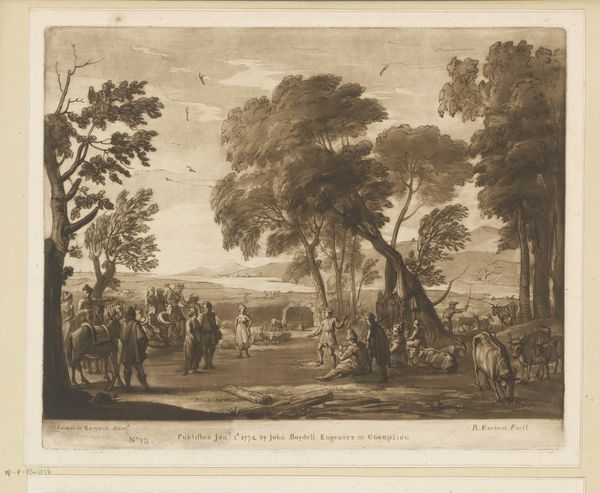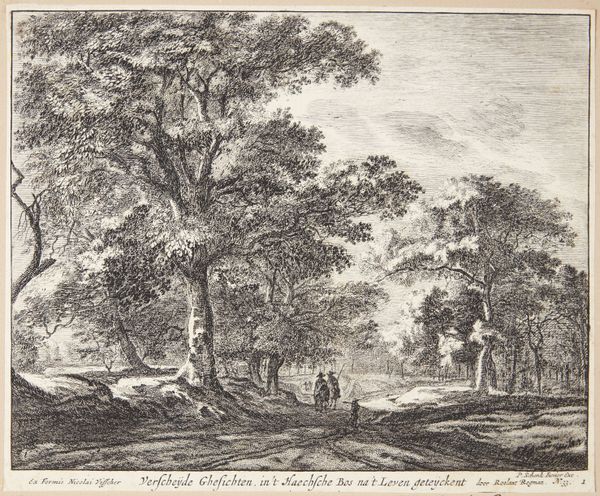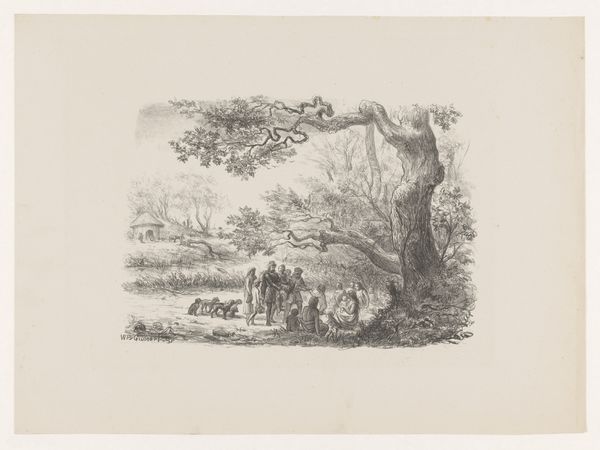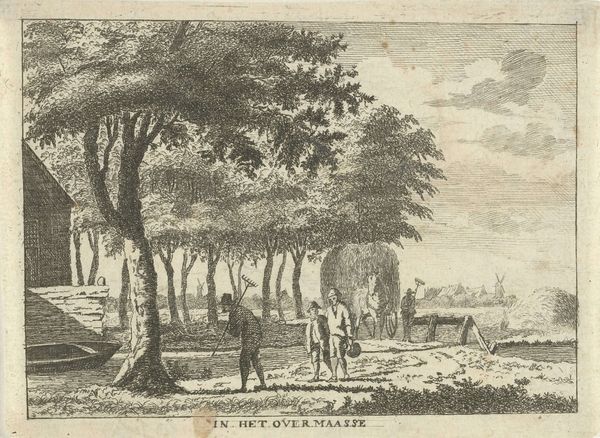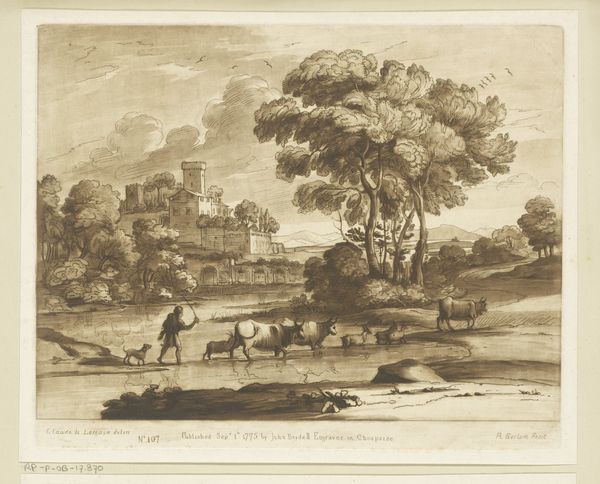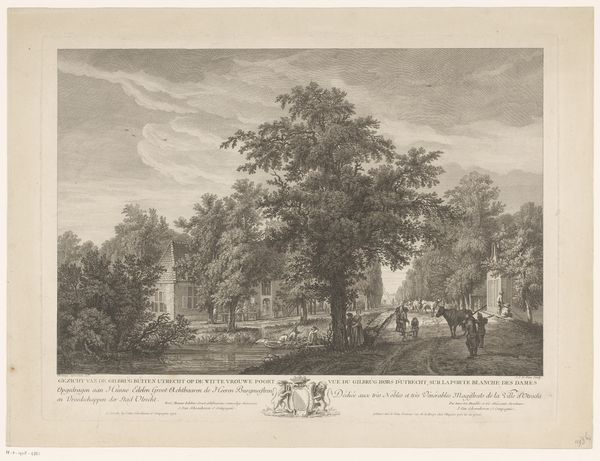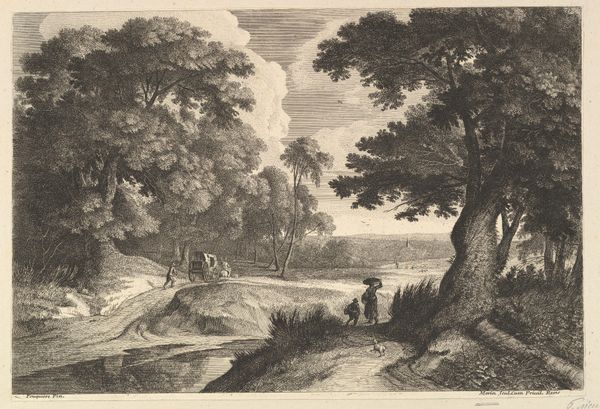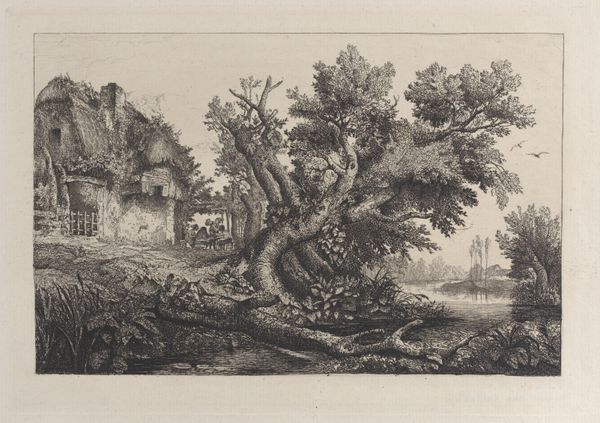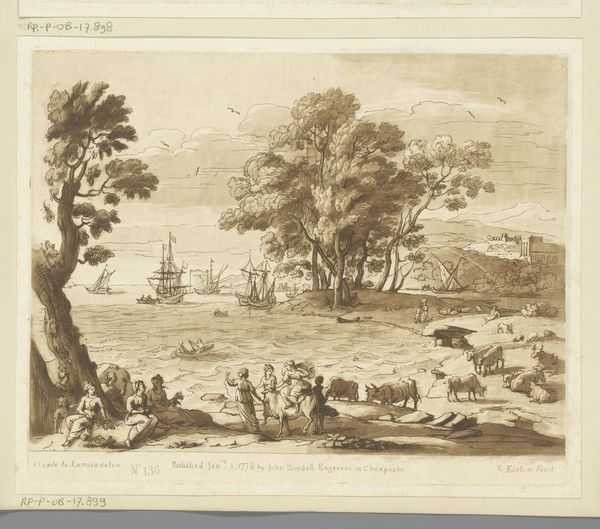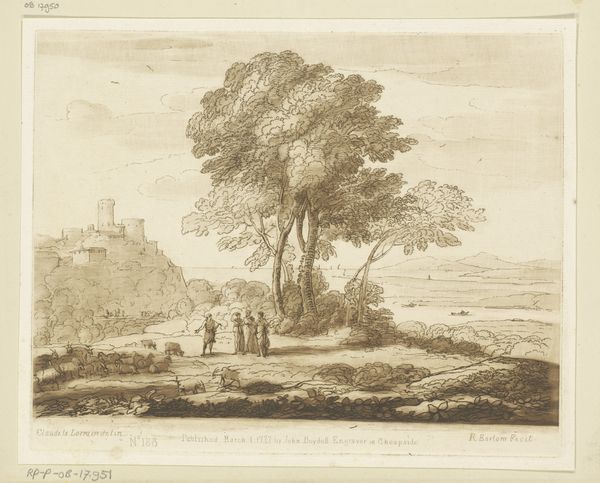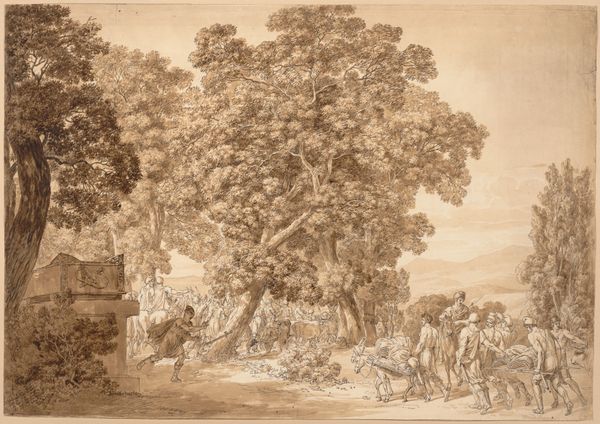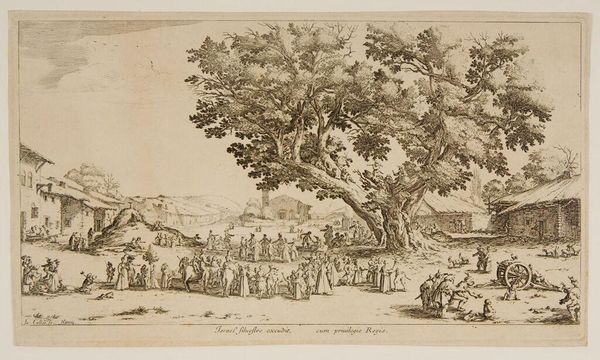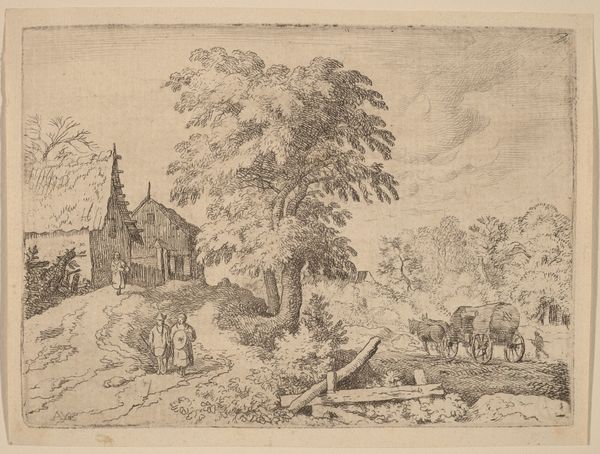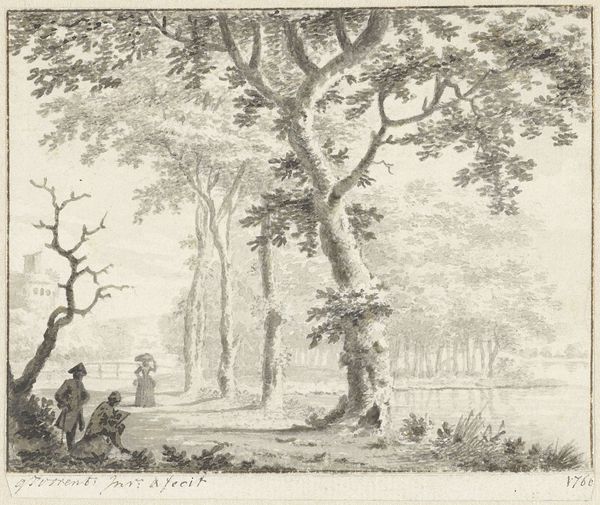
drawing, print, engraving
#
drawing
# print
#
pencil sketch
#
landscape
#
romanticism
#
history-painting
#
engraving
Dimensions: Sheet: 12 5/8 × 17 7/16 in. (32 × 44.3 cm) Image: 8 11/16 in. × 13 in. (22 × 33 cm)
Copyright: Public Domain
Editor: "The Group in Action," created between 1812 and 1822 by Horace Vernet. It's a drawing or print. It really has a documentary feel to it; the crosshatching almost feels journalistic. What stands out to you about the composition? Curator: This print commands attention primarily through its masterful manipulation of line and tone. Note the strategic placement of the gnarled trees, functioning almost as a proscenium arch. How would you describe their contribution to the overall structural integrity of the image? Editor: Well, the trees certainly create a foreground, drawing my eyes to the figures and cannon in the center while framing the architecture in the background. They provide depth, right? Curator: Precisely. And consider the dichotomy between the ordered military figures and the seemingly untamed landscape. This contrast injects a vital tension into the piece. Further analysis reveals that the light source seems diffuse, casting subtle shadows that articulate form without overwhelming detail. Editor: I see how the subtle gradations create form and separation of elements within the piece. It really maximizes depth! Curator: Indeed. Vernet orchestrates a complex interplay of light and shadow using only line and tone to construct a powerful visual experience. What does the strategic deployment of engraving contribute to the perception of movement in the artwork? Editor: It lends the print a great dynamism, the way light glances off different surfaces! I focused too much on the historical aspect initially, rather than on the technique. Curator: Quite understandable, many viewers do. But, remember, the image's strength lies equally in its intrinsic formal qualities and its suggestion of action. Now, knowing what you do, what more can we understand about Vernet's perspective? Editor: Thinking about his manipulation of light and depth, I see it as less of a dry document and more of an artistic statement! Curator: Precisely! Form, here, precedes function!
Comments
No comments
Be the first to comment and join the conversation on the ultimate creative platform.
